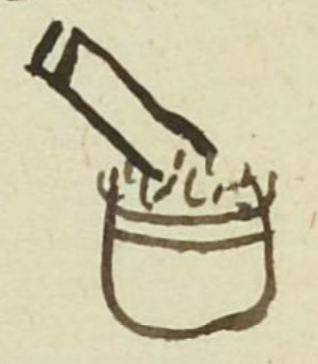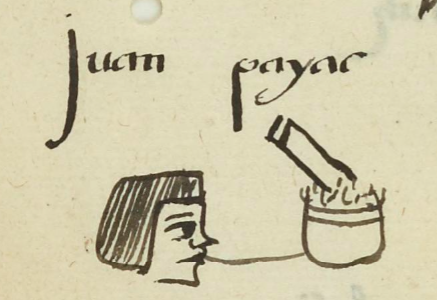Payac (MH602v)
This black-line drawing of the simplex glyph for the personal name Payac (“He Broke Up the Clumps,” attested here as a man’s name) shows a bowl with what may be a grinding tool and perhaps food coming up over the top of the container. The bowl has a thin horizontal line just below the top. The stirrer or grinder also has a thin stripe near the top.
Stephanie Wood
This "preterit form" (ending in -c) seems unconvincing for the verbs payana or payania. But the suggestion of grinding or breaking up maize (or the like) may be a phonetic indicator for the ethnicity Payaqui. According to Wendy Griffin (in a 2014 blog post), "Although Payaqui was originally founded as a confederation of the Nahuas with the Chorti in the tricountry border area there, the Spanish conquerers in the 1520’s reported to Cortes that they went through Payaqui to get to the gold fields in the Olancho valley from the Pacific Coast of Nicaragua. Missionaries in the 1600’s also reported working with Jicaques (free, unconquered, non-Christian) Indians in the Department of El Paraiso of the Paya nation. In modern Honduras Payaqui has been a building in Tegucigalpa and a musical group."
Stephanie Wood
Juan payac
Juan Payac
Stephanie Wood
1560
grind, moler, food, comida, gourd cup, jícara

payana, to break up or crumble, https://nahuatl.wired-humanities.org/content/payana
Él Molió Algo
Stephanie Wood
Matrícula de Huexotzinco, folio 602v, World Digital Library, https://www.loc.gov/resource/gdcwdl.wdl_15282/?sp=286&st=image.
This manuscript is hosted by the Library of Congress and the World Digital Library; used here with the Creative Commons, “Attribution-NonCommercial-ShareAlike 3.0 License” (CC-BY-NC-SAq 3.0).




